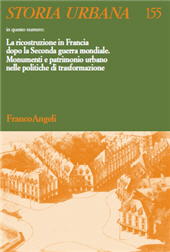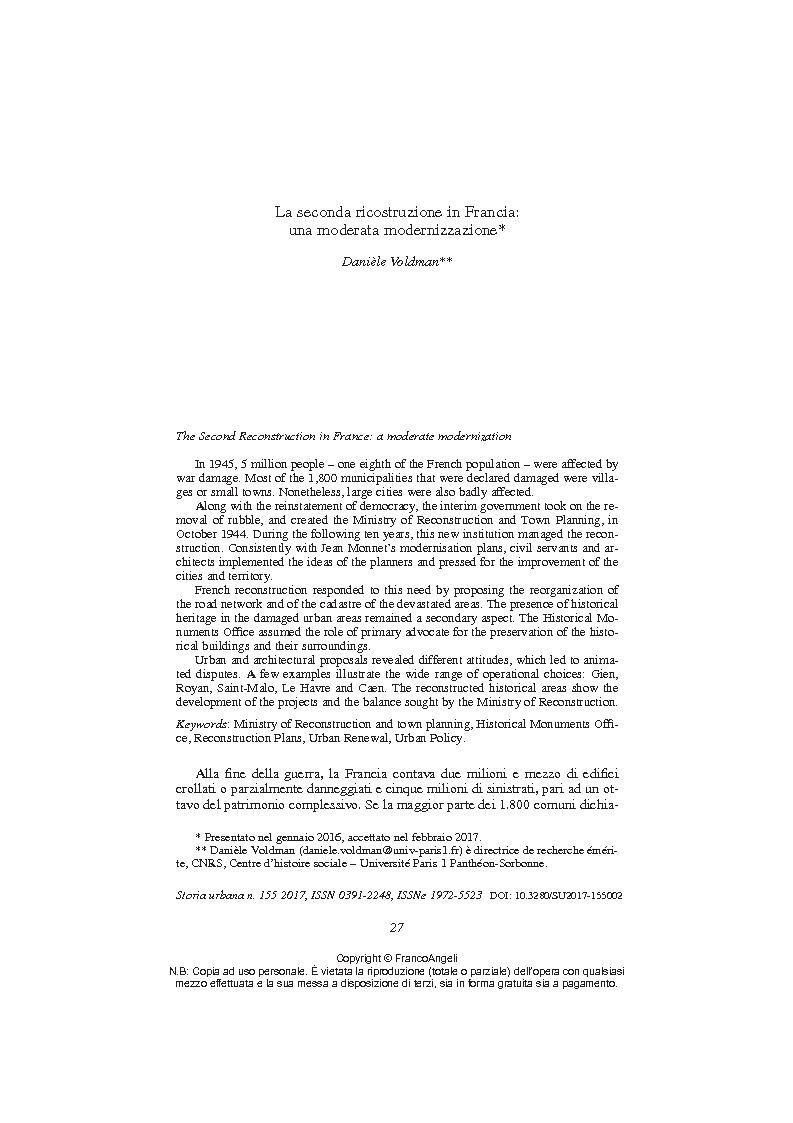La seconda ricostruzione in Francia : una moderata modernizzazione
27-42 p.
In 1945, 5 million people - one eighth of the French population - were affected by war damage. Most of the 1,800 municipalities that were declared damaged were villages or small towns. Nonetheless, large cities were also badly affected. Along with the reinstatement of democracy, the interim government took on the removal of rubble, and created the Ministry of Reconstruction and Town Planning, in October 1944. During the following ten years, this new institution managed the reconstruction. Consistently with Jean Monnet's modernisation plans, civil servants and architects implemented the ideas of the planners and pressed for the improvement of the cities and territory. French reconstruction responded to this need by proposing the reorganization of the road network and of the cadastre of the devastated areas. The presence of historical heritage in the damaged urban areas remained a secondary aspect. The Historical Monuments Office assumed the role of primary advocate for the preservation of the historical buildi
ngs and their surroundings. Urban and architectural proposals revealed different attitudes, which led to animated disputes. A few examples illustrate the wide range of operational choices: Gien, Royan, Saint-Malo, Le Havre and Caen. The reconstructed historical areas show the development of the projects and the balance sought by the Ministry of Reconstruction. [Publishers' text].
Ist Teil von
Storia urbana : rivista di studi sulle trasformazioni della città e del territorio in età moderna : 155, 4, 2017-
Artikel aus derselben Ausgabe (einzeln erhältlich)
-
Informationen
ISSN: 1972-5523
THEMENBEREICHE
KEYWORDS
- Ministry of Reconstruction and town planning, Historical Monuments Office, Reconstruction Plans, Urban Renewal, Urban Policy



